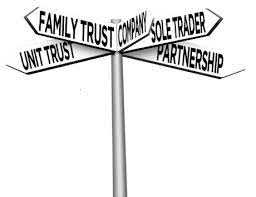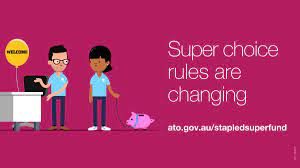How does the 2022 Federal Budget affect you?

So how does the 2022 Federal Budget affect you?
What do you stand to gain?
What do you stand to lose?
We have written our tips and traps newsletter as to how the 2022 Federal Budget affects the typical small & medium sized business as well as individuals.
You can access it by clicking on Budget 2022 Tips & Traps
In coming weeks we will be amending our pre year end planning checklist accordingly. We so look forward to the valuable process of ensuring clients take up all benefits and avoid any pitfalls.
Whilst we will be on the front foot proactively guiding our clients, we welcome any questions you may have.
2022 Federal Budget
Please find attached a briefing paper outlining the various announcements within the 2022 Federal Budget. This will shortly be followed by a more detailed tips and traps analysis.
It is important to remember that a Federal Budget is only a series of announcements. The announcements still await being passed into law even if the starting date was stated to be Tuesday night. That said, the fuel excise reduction legislation was passed yesterday.
Moreover, we have an election just weeks away and very possibly a change of government. Labor has already stated that they intend to hand down their own Budget later in the year should they win the election.
I take this opportunity to highlight what I believe are the 6 most important announcements that affect most clients. Not all of these may affect you personally and other announcements may, but these are the 6 with the widest impact:-
- Cost of living support through the $250 cost of living payment and the $420 increase in the Low and Middle Income Tax Offset.
- I must admit that even with low interest rates, I didn’t see this one coming given prevailing share and property prices – an extension of the 50% minimum pension reduction for the 2022/23 year.
- 20% extra deduction for small business expenditure on digital adoption expenditure.
- 20% extra deduction for skills and training expenditure.
- 50% reduction in the fuel excise tax for 6 months.
- Covid test expenses paid by employees and employers will be tax deductible and employers will not be subject to Fringe Benefits Tax.
And as far as I can read so far, there was no announcement as to another extension of the instant asset write-off. So this means that after 30th June 2023, small businesses will not be able to deduct in one year the full cost of any asset they buy; noting that cars are subject to a limit. It will be some time before supply chains revert to pre-covid norms, so best to start planning any asset purchase sooner rather than later. And remember, this means that any asset purchased must be installed ready for use before July 2023.
As I said, we will come back to you with a more detailed tips and traps analysis. In the meantime, I leave you to read the attached briefing paper and moreover welcome any questions you may have.
You can access our briefing paper by clicking here.
Next Director Identification Number (DIN) requirement
We have made aware in past blogs of the staged requirement for directors to apply for and hold a Director Identification Number (DIN).
As of Monday night, we now enter the next DIN stage.
From Tuesday 5th April, a first time director of an Australian company must have been issued with their DIN before they apply to become a director.
Those directors that were directors before November 2021 still have until October 2022 to apply for their DIN. But please don’t leave it until the last minute, particularly if you want to apply by paper!
Warning
Those first time directors since October 2021 have 28 days to apply for their DIN. Those that have not applied for one are now being actively reminded. It is good that there has been a gently, gently approach as the fines are eye watering.
Please find following the DIN registration link.
Due to privacy reasons, we are prohibited from applying on your behalf – yes it does seem odd given we apply for personal Tax File Numbers and handled passports and drivers licences when applying for various state covid grants.
That said, we welcome any query you may have.
You may also wish to view our past blogs on DINs.
- Requirements – click here
- Update – click here

Director Identification Number (DIN) Update
It is a while since we posted our initial blog on this new requirement. With that in mind, it is now time for an update and reminder.
A phase-in registration process started late last year under which all Australian directors are required to have applied for their Directors Identification Number (DIN).
You can read more by clicking here
But the critical requirement is adhering to the timetable of when you must apply for your DIN:-
- If you were a director by 31st October 2021 – by 30th November 2022
- If you become a first time director after 31st October 2021 but before 5th April 2022 – within 28 days of appointment.
- After 4th April 2022 – before appointment.
The original wording of this timetable was, to say the least, poorly phrased and confusing. Thankfully, it has now been clarified. It is now crystal clear that a person who was a director before November 2021 has until October 2022 to apply for their DIN.
Last year when applying for state grants we had to gain and upload copies of sensitive documents such as passports and drivers’ licenses. We therefore fid it odd that we are not permitted to apply for clients. It is also odd from the viewpoint that many clients will be unable or uncomfortable in applying.
That said, the paper application form is now available – you can find it at click here
It remains unclear how those will be able to apply where they don’t hold certain key documents. Same too where one has documents issued in their middle name, incorrectly spelt versions and the like.
And please remember to notify us when you have been issued with your number.
Why is planning so important?

Why is planning so important? No doubt you had numerous ideas over the summer break on ways you can improve your business in 2022. Don’t let that impetus and initiative slip away! The medium by which to bring those thoughts together and generate results is to bring everything together in a business plan.
And new year planning could not be more important given how covid affects us all.
Planning requires thought, analysis and decisions to be made in context of other factors and considerations (and not in isolation). Planning requires clear thinking, rather than knee-jerk reaction, and forces you to take a breath. It is no coincidence that those businesses that plan tend to be more successful. It is that focus that also ensures that key people work on the key tasks and aren’t consumed by dealing with what were really unimportant but neglected matters that have become urgent.
In preparing for battle I have always found that plans are useless but planning is indispensable.
Dwight D Eisenhower
(And he should know as he was in charge of D-Day)
Some think it requires you to lock yourself away for days on end. It doesn’t. It will however take time as will the on-going reviews of performance. Planning gives you a roadmap and series of goals to measure yourself against. It also gives not clarity but also focus to your employees. Don’t lose those ideas you had! Set aside time to properly formulate a plan and put it into writing.
We have all the tools and experience to guide you through this process.
We also have the systems to both measure your success and hold you accountable in reaching your goals.
And what better way to identify key areas of focus for 2022 by attending our upcoming webinar – 7 key things to implement in 2022. You can register your place by clicking here.
A good plan is like a road map.
It shows the final destination and
usually the best way to get there.
H J Judd
SG super reminder

Friday 28th January is the end date for satisfying your Super Guarantee (SG) super obligations for the December 2021 quarter.
Please note that super clearing houses take up to 10 days to pass the money through to the super fund. It therefore means that processing and payment to the clearing should be made no later than this Friday.
And please make sure you have been calculating super at 10% since it increased on 1st July 2021.
SG super should never be paid late as late payments attract substantial interest and penalties. Furthermore, SG (and BAS) liabilities that remain unreported and unpaid after 3 months automatically become personal debts of directors.
We welcome any question you might have.
Worried about your cash flow?

Worried about your cash flow? It’s the number 1 concern at this time of year. And understandably so as cash flow is the oxygen that keeps any business running.
Cash flow concerns this year are a bit different.
Whilst some business have sold their socks off over the last 18 months, others have got by whilst others have struggled. Now that many businesses have been able to fully trade again, a Christmas holiday slowdown hasn’t exactly come at the right time for many.
It also appears as the ATO, who haven’t been chasing unpaid debts, now seemingly appears to be actively be chasing unpaid tax debts. And for those with tax debts unreported and unpaid for more than three months, there is particular concern as it has been said by liquidators that the ATO will use the Director Penalty Regime to assign and collect business tax debts from directors.
Not being able to pay wages and other expense sin January and February is what keeps small business owners awake at this time of year. And the problem is publicly available accounting software reports on the past. Some may now market cash flow forecasting but that is very short term and incomplete.
So what do you need to understand and control your cash flow?
- We can provide you with a number of tips gained form any years working with and advising a vast array of industries.
- We have a specialised cash flow tool that provides full 4 way forecasts.
So what should you do?
We invite you to a free 30 minute meeting in which we can again understanding of your situation and concerns and then explain ways in which we can help. You have nothing to lose and may end up sleeping better and enjoy Christmas.
Should you change business structure?

Trust, company, partnership or sole trader? Choosing the right structure to run your business is not an easy task.
You have to take into account such things as:-
- Asset protection
- Family succession
- Tax
- Admitting or removing unrelated business partners.
Each structure has their own advantages and disadvantages depending on your personal circumstances.
But even with the right choice made at day one, personal circumstance often change over time to the extent that the original entity that once served its purpose no longer does. Or becomes a hindrance.
There are two main obstacles to changing structure:-
- Cost – both monetary and time (as in notifying customers etc as well as getting insurance and telecommunication contracts re-set in your new entity)
- Transaction costs – in particular Capital Gains Tax, but also there can also be considerations such as Stamp Duty
But there are forms of relief under the Tax Act which either defer, reduce or eliminate and capital gain.
Too many accountants are focused on processing the past, whether that be a Tax Return or a BAS. At MRS, we are focused on our clients’ long term success and security. We are currently re-structing two clients structure – one to allow the admission of business partners and the other to obtain greater protection, greater tax efficiency and eventual exit of the business founder at a much reduced capital gain.
Are you concerned that you are not in the best structure? Or may this is not something your accountant has not discussed with you. Either way, we welcome a free 45 minute exploratory discussion.
The 5 key things to implement in 2022

Hard to be believe this year is almost over! It has been a tough year for many. But that said, the economy has performed surprisingly well, we have high vaccination rates and statements from our leaders that we are not going back into lockdown.
It seems as though we can relax over the Christmas break with a degree of calm.
The Christmas break is a great time to take a breath and re-asses your work and personal life.
But having started work on the back of the 1983 recession and worked through the ealry’90’s recession, not to mention the GFC, the 1997 Asian crisis and other such events, the effects of covid will play out for a couple of years yet. We are not out of the woods yet.
In light of the uncertain times that lie ahead, on Wednesday 12th January we will explore 5 key things to address and implement in 2022
- Re-evaluate how covid has changed your business and moreover how your business needs to adapt. In particular we will explore who is now your customer target base and how to find them.
- Amend your STP payroll reporting to not fall foul of Fair Work Australia obligations.
- Making a profit is the goal but the oxygen to a business is its cash flow. We will explore how to better manage and improve your cash flow.
- With a federal election looming, take up any advantage under existing tax laws.
- Being in business carries the risk of getting sued. We will examine key asset protection strategies to protect the wealth you have worked hard to generate and/or inherited.
You can reserve your place at this 45 minute webinar by clicking here
And as we are passionate about helping small business owners through these difficult times, we welcome your passing on this invitation to family, friend and business associates.
Important change to employer super obligations

An important new requirement took effect from 1st November 2021. Employers now need to complete an extra step in respect of super when taking on a new employee.
Back in 2005, the ATO introduced Choice of Super Fund rules. This was a positive change as it ensured employees had a choice as to where their super would be contributed to. This initiative limited employees having multiple accounts and therefore reduced extra costs and the opportunity for super to be lost. And arguably more importantly, it also ensured employees did not lose life insurance under super when changing jobs.
Where an employee did not exercise their choice then the super had to be made to a default fund. A default fund had to offer a minimum $50,000 in life insurance (hardly enough but better than nothing). The default fund was also specified in an award (hence the rise of the industry funds).
An improvement has been made to the choice system in light of technological advancements and the number of employees with multiple super accounts as a result of their not exercising choice.
So from 1st November, a system has been put in place to staple a super account to an employee. This means that the default fund choice will be replaced by employers having to contribute to a stapled super fund where no choice is exercised. It only applies to employees employed on or after 1st November 2021 (with one exception below).
How do you find an employees’ stapled super fund?
If a new employee has not exercised choice within 28 days of starting employment, then the employer must log on ATO online services and access the stapled super fund service. Apparently the stapled fund(s) will be listed on screen within minutes of completing a request.
We are not yet clear as to what employers without access to a computer or ATO online services are supposed to do (other than ask employees to complete and return the choice form within 28 days).
What if you contribute to a non-stapled super fund?
If an employer contributes into the default fund without checking for a stapled super fund, then that contribution will be subject to super guarantee charge. In other words, the contribution is disregarded AND another contribution has to be made (which is non-deductible and can easily be two to three times more costly).
Other words of warning
- Employers only have two months to contribute into a super fund after an employee has exercised their choice.
- If you received an employees choice before 1st November where they nominated the default fund but no contributions were made before 1st November, contributions must be made under the new stapled super fund requirements.
Want to know more?
Call us
